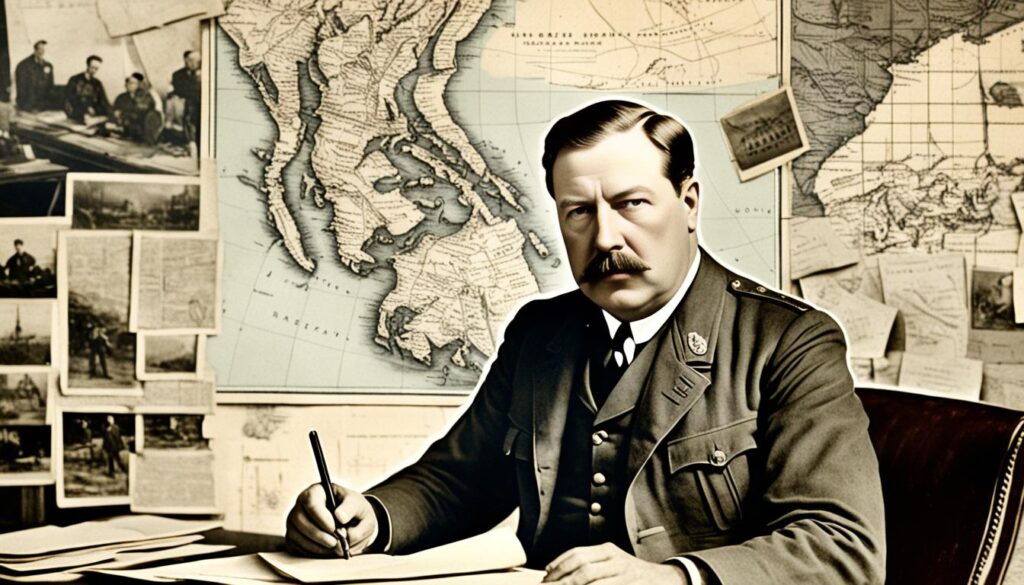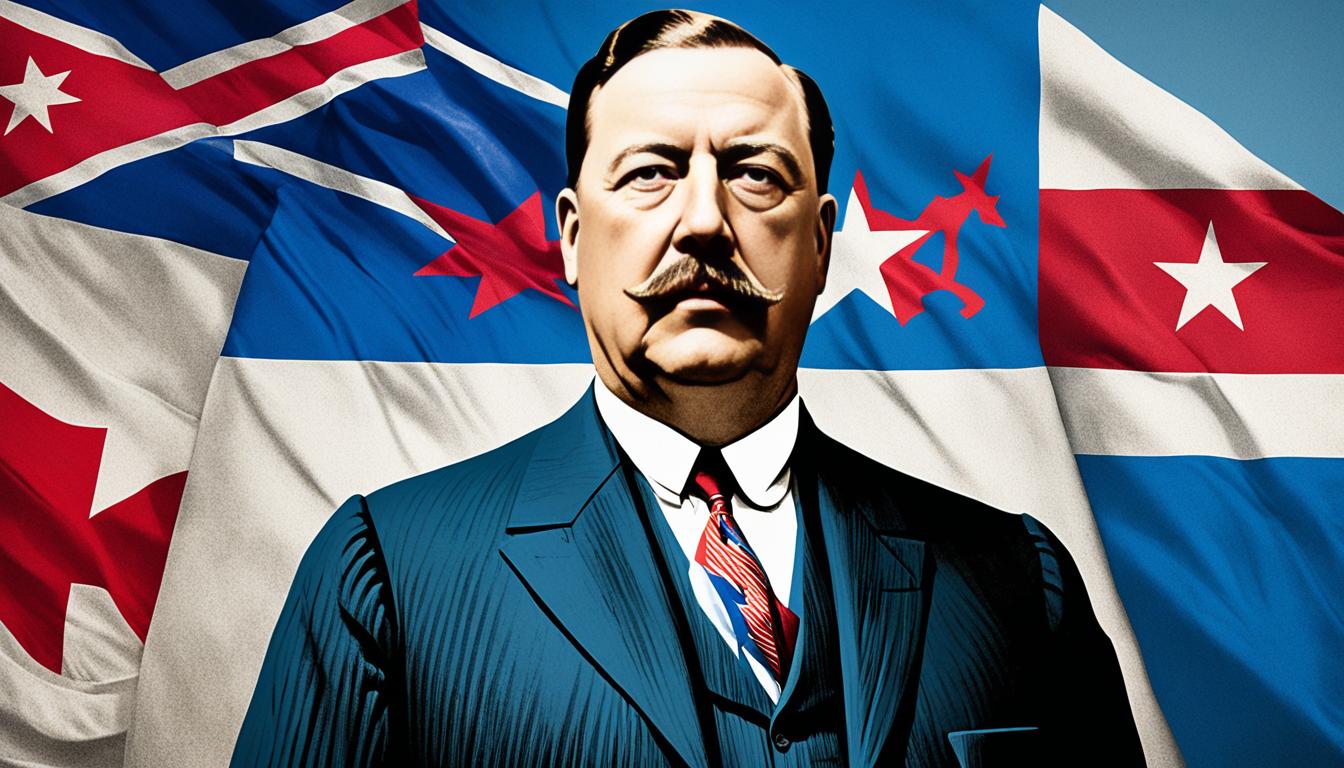William Howard Taft was a key figure in American history. He made a big impact on civil governance and American expansion. Born in Cincinnati, Ohio, Taft’s career took him to important roles in colonial administration.
He was in charge of both the Philippines and Cuba. This showed his skill in leading territories under U.S. rule.
As Governor-General of the Philippines from 1900 to 1903, Taft worked hard to set up effective civil administration. Later, he was Provisional Governor of Cuba in 1906. These roles helped shape American colonial policies.
His time in the Philippines and Cuba got him ready for bigger roles in U.S. leadership.
Key Takeaways
- Taft served as governor of both the Philippines and Cuba
- His roles in colonial administration shaped American imperialism
- Taft was Governor-General of the Philippines from 1900 to 1903
- He became Provisional Governor of Cuba in 1906
- These experiences influenced his later political career
Taft’s Early Life and Rise to Political Prominence
William Howard Taft started his journey to the top with outstanding academic success. He was second in his class at Yale University and Cincinnati Law School. This strong start helped him in his future law and political career.

In Cincinnati, Taft’s legal career took off. He was given local jobs because of his talent and hard work. He became a judge on the Cincinnati Superior Court in 1887. This job gave him important experience in the legal system.
This experience was key in his handling of the Philippine-American War and the Insular Government.
Alphonso Taft, Taft’s father, helped him make important political connections. These connections led to his job as U.S. Solicitor General in 1890. Even though Taft wanted to stay in the judiciary, his wife, Helen Nellie Herron, pushed him towards higher political roles.
Taft’s rise happened during a time of Military Occupation in many areas. His legal knowledge and experience were crucial in managing complex situations like the Insular Government in the Philippines. These skills helped him handle the challenges of governing the Philippines and Cuba.
Taft’s Dual Governorship: Philippines and Cuba
In 1900, William Howard Taft started shaping U.S. territorial policies. President McKinley picked him to lead the Philippine Commission. This commission aimed to bring civilian rule to the new territory.
As Governor-General, Taft made big changes. He set up a civil service, improved public education, and gave land to Filipino farmers. These steps were meant to build a strong civilian government. They also prepared the Philippines for self-rule with U.S. help.
Taft’s work in the Philippines showed his focus on civilian leadership. This approach was new and set a standard for future colonies.
Later, in 1906, Taft became Provisional Governor of Cuba. He managed U.S. interests there while keeping an eye on civilian rule. This job proved Taft could lead in different settings.
While governing the Philippines and Cuba, Taft always pushed for civilian rule and self-governance. His time in these places shaped his views on U.S. territories. These views helped him in his later roles as Secretary of War and President.

Leave a Reply